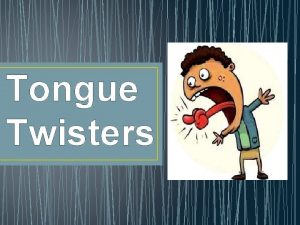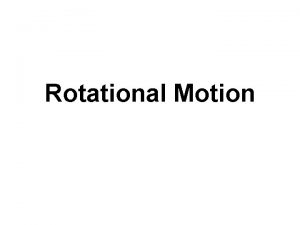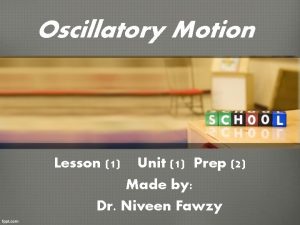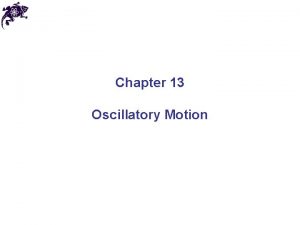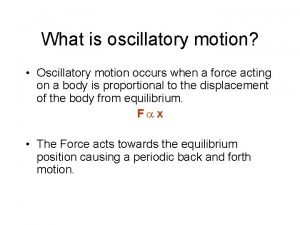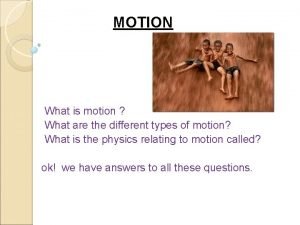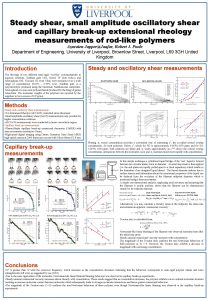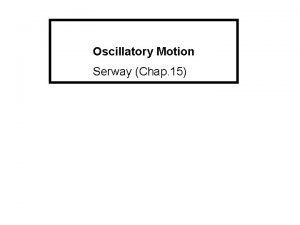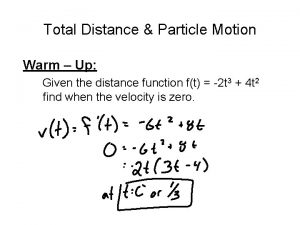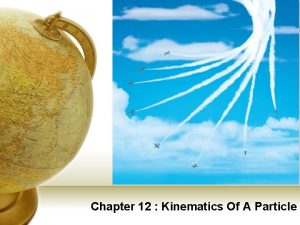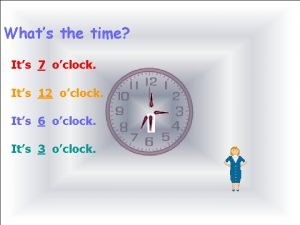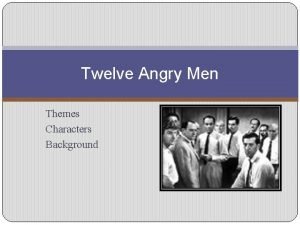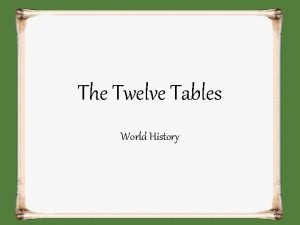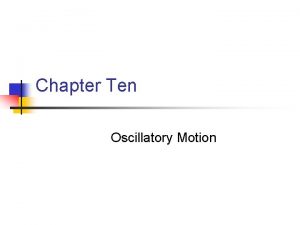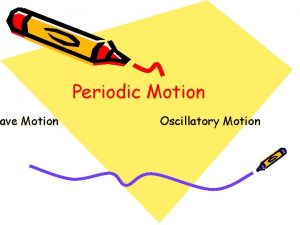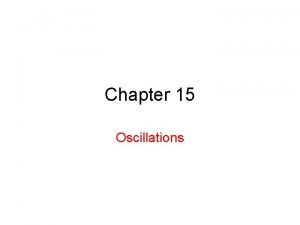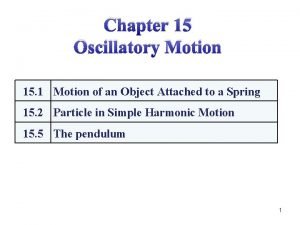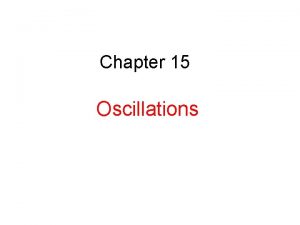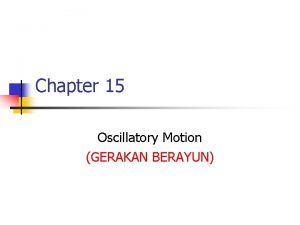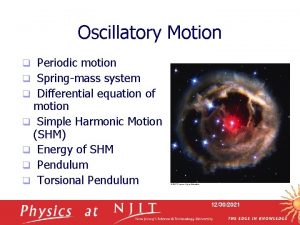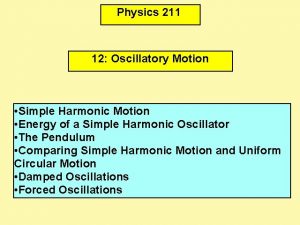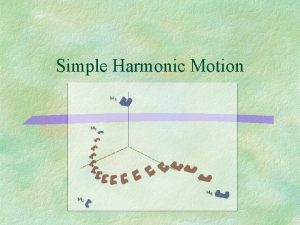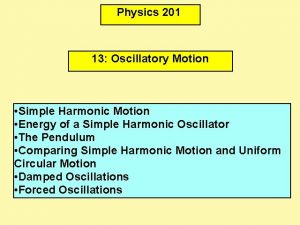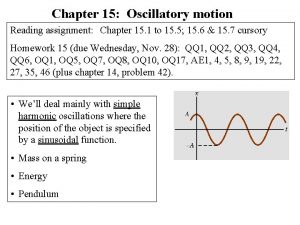Oscillatory motion chapter twelve Motion of a particle

















- Slides: 17

Oscillatory motion (chapter twelve) • • Motion of a particle on a spring Simple harmonic motion Energy in SHM Simple pendulum Physical pendulum Damped oscillations Forced oscillations


Particle attached to a spring We can model oscillatory motion as a mass attached to a spring (linear restoring force) Causes displaced mass to to be restored to the equilibrium position. Potential energy Kinetic energy. At equilibrium – large KE but force is now zero. Newton’s first law - keeps moving.

Particle attached to a spring We can use Newton’s 2 nd law to quantitatively describe the motion Acceleration proportional to displacement. Opposite direction.

Simple Harmonic Motion Defining the ratio k/m 2, the equation of motion becomes (in one dimension) This equation has the solution

SHM A: amplitude of the motion (maximum displacement) : =(k/m)½ – angular frequency of the motion : phase – where the motion starts A and are set by the initial conditions, is fixed by the mass and spring constant http: //webphysics. davidson. edu/Applets/java 10_Archiv e. html

SHM Period of one full cycle of motion: Maximum velocity and acceleration:

Energy in SHM Kinetic energy: Potential energy: Total energy of the system: Total energy is constant!

Energy in SHM Oscillation is repeated conversion of kinetic to potential energy and back. Using the expression for the total energy, we can find the velocity as a function of position http: //webphysics. davidson. edu/physletprob/ch 7_in_cla ss/in_class 7_1/default. html

The simple pendulum T Fg Small angle approximation - sin L

The simple pendulum This equation has the same form as that for the motion of the mass attached to a spring. If we define we get the exact same differential equation, and so the system will undergo the same oscillatory motion as we saw earlier. Note – the frequency (and period) of the pendulum are independent of the mass!

The Physical Pendulum An object hanging from a point other than its COM d COM

Damped Oscillations If we add in a velocity dependent resistive force The solution to this DE when the resistive force is weak This describes an underdamped oscillator

Damped Oscillations

Damped Oscillations The frequency of oscillation is In other words, some natural frequency plus a change due to the damping When b=2 m , the system is critically damped (returns to equilibrium) For b>2 m , the system is overdamped – also returns to equilibrium (slower rate).

Forced Oscillations If we try to drive an oscillator with a sinusoidally varying force: The steady-state solution is where 0=(k/m)½ is the natural frequency of the system. The amplitude has a large increase near 0 - resonance

Forced Oscillations
 5 tongue twisters
5 tongue twisters What is the difference between torque and force
What is the difference between torque and force Examples of oscillatory motion
Examples of oscillatory motion Oscillatory motion
Oscillatory motion Oscillatory motion
Oscillatory motion What is acceleration
What is acceleration Small amplitude oscillatory shear
Small amplitude oscillatory shear Oscillatory
Oscillatory Total dista
Total dista Chapter 2 motion section 1 describing motion answer key
Chapter 2 motion section 1 describing motion answer key Chapter 2 motion section 1 describing motion answer key
Chapter 2 motion section 1 describing motion answer key Chapter 2 motion section 1 describing motion answer key
Chapter 2 motion section 1 describing motion answer key Chapter 12 kinematics of a particle solutions
Chapter 12 kinematics of a particle solutions The 7
The 7 What are the terrible twelve water pollution
What are the terrible twelve water pollution Tcms morning show
Tcms morning show Theme of 12 angry men
Theme of 12 angry men Twelve tables summary
Twelve tables summary
